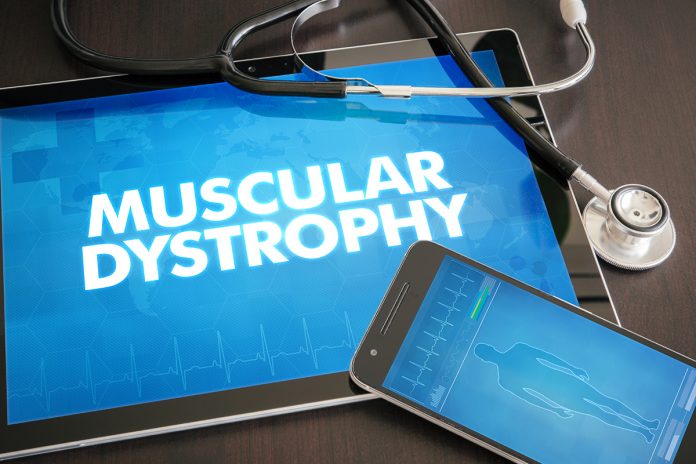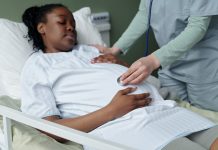Dr Ahlke Heydemann, Associate Professor and Director of Medical School Curriculum at University of Illinois, Chicago explains Duchenne muscular dystrophy (DMD), focussing on the issue of correcting the dystrophin gene
Duchenne muscular dystrophy (DMD) is an inherited progressive disease that affects skeletal, diaphragm and cardiac muscles. The pathology initiates with muscle weakness, particularly noticeable on the leg muscles of the young – two to three-year-old – boys. The dystrophin gene is located on the X-chromosome; therefore, it is sex-linked and only boys get the full disease. Women are carriers and can develop cardiomyopathy much later in life. As time goes on, the skeletal muscles continue to weaken, and corticosteroid treatments are initiated, usually at around six years of age.
A few years later, night-time assisted ventilation and then prophylactic ACE inhibitors for the maintenance of respiratory and cardiac function, respectively, are added to the treatment regimen. These combined treatments have extended the quality and quantity of the patients’ lives, but more effective treatments or even cures are still urgently required. Within MD, there is some relationship between the specific mutation in the dystrophin gene and the protein levels of dystrophin and the severity of the disease.
The mildest cases are classified as Becker MD (BMD). These mild cases reveal that a relatively low expression level of dystrophin – only 20 to 40 % of normal levels – is required to establish a mild disease course. This very important trait can be utilised to set a reasonably achievable goal for a highly beneficial and successful therapy.
Treatments in the preclinical and clinical trial pipeline
There are many promising treatments in the preclinical and clinical trial pipeline. These can be subdivided into overlapping categories:
Inflammation/immune inhibitors
Modulators of metabolism
The reestablishment of the dystrophin glycoprotein complex without dystrophin
Gene correction
The gene correction strategy can be further subdivided as shown below:
- Cell transplantation.
- Stem cells
- Embryonic.
- Induced.
- From normal donors.
- From the patient, corrected in vitro
- Muscle satellite cells.
- From normal donors.
- From the patient, corrected in vitro.
- Premature stop codon read-through.
- Exon skipping.
- CRISPR/Cas.
Utilising cells to reintroduce a wild-type dystrophin gene into diseased muscle has been investigated for many years. Recent progress has given new hope to this particular therapy for MD. Stem cells (SC) can be harvested from a number of sources: embryonic (ESC) tissues or induced (induced pluripotent stem cells) (iPSC) from adult tissues. These SCs have the potential to become permanently engrafted into the host muscles, proliferate, express dystrophin and respond to injury. ESCs have the benefit of being immune privileged, meaning the host tissue will not reject the cells as foreign. However, obtaining the number of ESCs required to treat a patient has been difficult. Proliferating the ESCs in culture causes functional changes that impede their effectiveness in establishing themselves in the host tissue.
One of the benefits of iPSCs is that scientists can produce large numbers without changing their effectiveness for transplant. ESCs are usually derived from normal donors and therefore, contain and deliver the intact dystrophin gene to all muscles that the cells populate. iPSCs can be derived from a normal donor or the patient themselves. If derived from the patient, the genetic defect will have to be corrected while the cells are in culture. An additional step, but a highly effective one, and using the patient’s cells ensures that a large immune response will not be mounted upon transplantation. One of the most positive aspects of this stem cell transplantation approach is that it can be a true cure. If the cells engraft and repopulate the muscles appropriately, they could survive and provide sufficient dystrophin for the life of the patient.
Muscle satellite cells (muscle resident stem cells) are another source of cells that could potentially engraft all muscle groups and be a true cure. These cells are derived from adults and are, therefore, more plentiful and tolerate proliferation in cell culture very well and their use has fewer ethical ramifications. The donor is a normal volunteer or the patient themselves, with the same considerations as mentioned above for the iPSCc. Recent work identifies a procedure that fuses normal donor satellite cells with the patient’s satellite cells. This results in cells which express dystrophin and are immune privileged. And, as mentioned above, the cells tolerate proliferation, so the clinicians can have a large number of cells available for transplantation.
Clinical trials are also being conducted upon premature stop codon read-through strategies. This approach is based upon a fortuitous discovery that some antibiotics impede bacterial proliferation by causing the protein-making machinery to ignore the bacterial stop codons, thereby, making longer and less functional proteins. A subset of dystrophin mutations in patients causes a premature stop codon, by the selective use of antibiotic-like pharmaceuticals, the mammalian ribosomes will ignore the stop codon and continue making the remainder of the dystrophin protein, with just one amino acid change, instead of no protein at all. In addition, advanced generation read-through pharmaceuticals have a much higher efficiency of ignoring the stop codon then the original antibiotics, providing higher levels of dystrophin expression.
Recent news has highlighted the success of exon-skipping strategies. This strategy is based upon aligning two synthetic nucleotide strands, with specific sites of the native DNA which causes the normal mRNA processing machinery to skip exons which contain the mutation. So far, this strategy has caused almost normal dystrophin protein to be expressed at close to therapeutically beneficial levels. Researchers are still perfecting this technique to produce more protein.
The CRISPR system is also being investigated for gene correction in isolated cells from DMD patients and for gene correction within the patient. The final stages of preclinical testing will soon be completed. The exon-skipping and CRISPR systems are largely patient specific. Therefore, each patient will require specific chemistries to guide the editing machinery.
The further good news is that these genetic correction strategies can be utilised with other strategies that treat the symptoms to provide the most patient benefit with the lowest side-effects. Very importantly, transplantation, read-through and exon skipping studies are currently being tested in patients for efficacy. In the near future, multiple options will be available for clinicians and their patients to combat this disease.
Please note: this is a commercial profile
Dr Ahlke Heydemann
Associate Professor
Director of Medical School Curriculum
University of Illinois, Chicago
Tel: +1 312 355 0259











